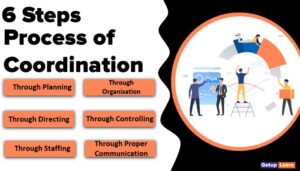Table of Contents
Types of Leadership Styles
Leadership style is the manner and approach of providing direction, implementing plans, and motivating people.
A group of researchers led by Kurt Lewin, in the first of its kind study, had identified three major leadership styles: autocratic or authoritarian, participative or democratic, and laissez-fair or free rein. Let us discuss these types of leadership styles in this article:
- Autocratic or Authoritarian
- Democratic or Participative
- Laissez-Faire or Free
- Bureaucratic
- Manipulative
- Paternalistic
- Expert Leadership
In this type of leadership, there is a complete centralization of authority in the leader, i.e., authority is centered in the leader himself. He has all the powers to make decisions. He uses coercive measures and adopts, a negative method of motivation.
An autocratic leader wants immediate obedience to his orders and instructions, and any negligence on the part of subordinates results in punishment. There is no participation as such from the subordinates in decision-making. An autocratic leader considers himself the only competent person in the organization.
According to Edwin B. Filipppo, the following are the three types of autocratic leaders:
-
Hard-Boiled or Strict Autocrat: This leader employs negative influence, expecting immediate obedience from employees. Non-compliance leads to punishment, and they make all decisions without sharing information with others. They maintain rigid performance standards.
-
Benevolent Autocrat: A paternalistic leader who uses positive influence and fosters effective human relations. They praise employees for following orders and encourage them to contribute solutions to problems. They enjoy controlling their subordinates’ actions.
- Manipulative Autocrat: This leader creates an illusion of participative decision-making but ultimately makes all decisions alone. Non-compliance also results in punishment.
Democratic or Participative
Democratic or participative leadership, also known as group-centered or consultative leadership, involves leaders consulting their groups and considering their opinions in decision-making. Democratic leaders encourage discussion and brainstorming among group members, exchanging ideas with them, and only making decisions with the group’s consent. In some cases, employee participation in decision-making is even rewarded.
This leadership style gives more freedom to group members, making them feel valued and important, boosting their confidence and job satisfaction. Participative decision-making improves the decision’s quality as it incorporates the valued opinions of talented group members. However, the main drawback is that it takes more time to arrive at a decision due to the time spent collecting employee opinions.
Laissez-Faire or Free
Rein In this type of leadership, there is the virtual absence of direct leadership, and hence it is often regarded as “no leadership at all”. There is a complete delegation of authority to subordinates, who can make decisions by themselves. The absence of leadership may have both positive and negative effects.
It can be effective if members of the groups are highly committed to their work. The negative aspect is that the leader is not competent enough to lead his group effectively. Further, members may feel insecure and develop frustration due to a lack of decision-making authority.
Bureaucratic
This type of leadership emphasizes the rules and regulations of an organization. The behavior of the leader is determined largely by the rules, regulations, and procedures to be followed under his leadership, and both the leader and his subordinates adhere to these rules and regulations.
Therefore, there is no difference between management and administration in this type of leadership. The employees have little to do themselves; it is the rules that determine their performance.
Manipulative
This type of leadership manipulates employees to attain their assigned tasks. A manipulative leader is quite selfish and exploits the aspirations of the employees for his gain. He knows very well the needs and desires of the employees but he does very little to fulfill them. Due to such an attitude, he has to face the hatred of the employees at times.
Paternalistic
A paternalistic leader believes in the philosophy that happy employees work better and harder. Such leadership maintains that a fatherly attitude is the right one for a better relationship between a manager and employees. Everyone within the organization should work together like a family.
Expert Leadership
Expert leadership emerged as a result of the complex structure of modern organizations. This type of leadership is based on the ability, knowledge, and competence of the leaders.
An expert leader handles the situation skillfully with his talent. The employees, on the other hand, feel relieved as they are working under a person who is an expert and can handle a situation without any problem.
FAQs Section
What are the types of leadership styles?
Autocratic or Authoritarian, Democratic or Participative, Laissez-Faire or Free, Bureaucrati,c Manipulative, Paternalistic, and Expert Leadership are the different types of leadership styles.








